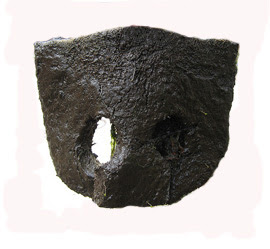Pond UV Clarifier Tips
Pond UV Clarifier Tips
Updated 9/6/13
UV Clarifier/ Filter placement
A UV Sterilizer/Clarifier works best when the UV is place AFTER the filter.
I know this contradicts some information I have read and this information is not necessarily wrong either, so let me explain further.
By placing your Clarifier after the filter, you will remove debris that will otherwise make penetration of UVC light difficult, further more in my experience this will greatly reduce the amount of sludge buildup inside your Sterilizer/Clarifier.
I will also note that the gimmicky wipers do not help much with the problem of sludge buildup.
 The reason some pond keepers recommend placing the filter after the UV Sterilizer is to trap algae that often clumps after passing through your clarifier, so as I noted this suggestion is not without merit.
The reason some pond keepers recommend placing the filter after the UV Sterilizer is to trap algae that often clumps after passing through your clarifier, so as I noted this suggestion is not without merit.However in practical experience (along with knowledge of how uvc works), I have found that in an either or situation, the first suggestion of placing the filter first allows the most efficient operation of your pond UV Clarifier/Sterilizer.
This said, a pond keeper can always employ both methods for even better results, although even here I find this to make no discernible difference as to clarity, only to the amount of detritus/mulm buildup in the pond (of which controlling this via whatever means possible is certainly useful to good pond hygiene).
The picture above left displays a very dirty pond filter sponge media, this is what you WANT your filter to block from going into your UV Sterilizer. If this accumulated sludge were to enter your UV Clarifier, your UVs effectiveness would be severely diminished.
Filters
This really goes without saying, but I will state the obvious (at least in my opinion, so please do not be insulted by my stating this point this way), use one OR MORE pond filters.
Often I have had persons tell me that they bought a UV Clarifier only to realize that the new pond keeper figured the UV Sterilizer would take care of the green pond all by itself, which often it will not.
I strongly suggest a Veggie Filter in addition to a more traditional Pond Filter such as the Premium SunSun Pressurized Filter.
For further information about this subject, please read this article:
Aquarium and Pond Answers; Veggie Filters.
Pond Algae Control
Flow Rate
This is a common problem in poor UV Sterilizer installation, but easy to solve.
This flow rate should be around 40-50 gph per watt for clarification in most common UV Sterilizers/Clarifiers or 55-65 gph per watts for premium high dwell time UV Clarifiers such as the TMC Pond Advantage.
Please click on the picture above for a larger view at this complete
Please see the "Complete Information" UV Sterilization article for more about this subject: UV Sterilization; How it Works
More information on TMC UV Advantage:
TMC Pond Advantage
Pond Information Article
Do not waste time or money on gimmicks
I will not waste space addressing this other than stating gimmicks such as wipers or “twists” do little to improve UV Sterilization, other than lightening up your wallet.
Please read this Aquarium/Pond UV Blog Post for more about this subject:
“UV Sterilizer Truths”
Maintenance
Clean your UV Sterilizer unit with each UV bulb change, which for a pond should be every season or every six months in warmer climates such as Southern California, Florida, Texas, etc.
Make sure models with a quartz sleeve get the quartz sleeve cleaned as well, especially of hard water deposits (which wipers do little for).
For low price, first quality UV replacement bulbs follow these links (depending on your bulb type):

For the absolute best in high dwell pond UV Clarifiers, the TMC Pond Advantage are well worth the extra expense as per their effectiveness, long life, and availability of parts.
Labels: algae clumps, Filter placement, Pond UV Clarifier, Pond UV Sterilizer, sludge buildup, Tips

 UV Sterilization in Aquariums and Ponds; How it works
UV Sterilization in Aquariums and Ponds; How it works


 TMC PRO Pond 110 Watt
TMC PRO Pond 110 Watt